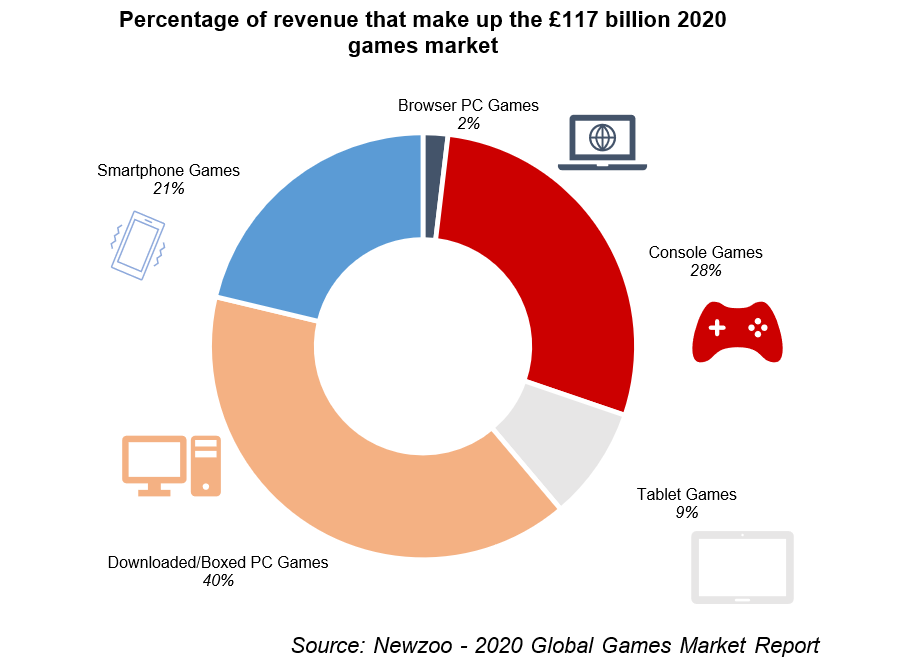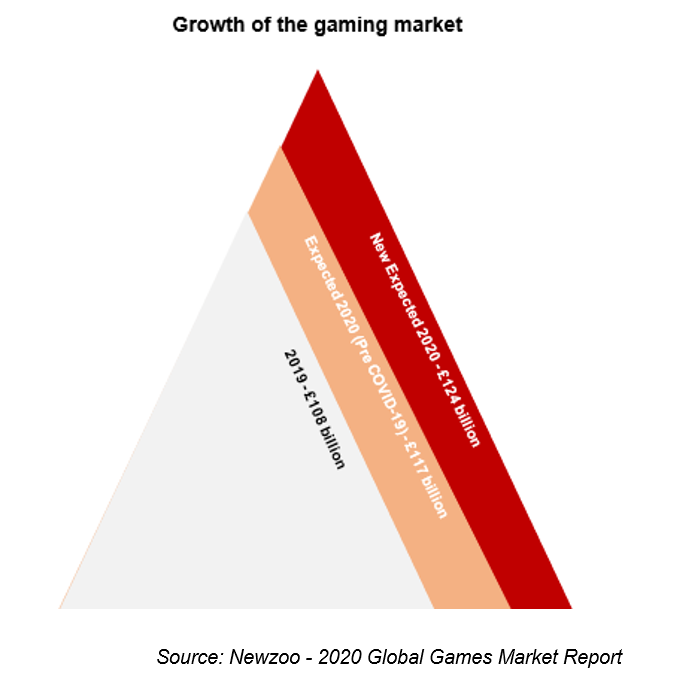“The beauty of chess is it can be whatever you want it to be. It transcends language, age, race, religion, politics, gender and socioeconomic background. Whatever your circumstances, anyone can enjoy a good fight to the death over the chess board”
– Simon Williams
Chess can be dated back at least 1500 years to Northern India, and it has evolved with the times; even through this pandemic. Although the exact number of chess players worldwide is unknown, we know that the number of players has grown over the last eight years. The last estimate by Fédération Internationale des Échecs (FIDE) was 600 million in 2012. This figure is expected to have increased, especially over the last year. But why has chess become so popular?
The impact of the pandemic
2020 has been an unprecedented and disruptive year, but despite this it has been a year of extraordinary growth. One where total internet searches grew by almost 70 percent, e-commerce by almost 12 percent and online streaming services by 28 percent, the online gaming market has shown exceptional growth with experts at Newzoo estimating that the games market would generate £124 billion in revenue, a 15 percent increase compared to the previous year. This exceeded the original £117 billion estimate.
In the first and last quarter of the year, platforms like Lichess, Chess.com and Chess24 reported significant spikes in activity leading to multiple server upgrades to cope with this increased demand.
Why is watching Netflix good for chess?
Based on Google Trends search queries for the terms ‘chess’ and ‘How to play chess’ worldwide, there was an increased affinity for the game in March/April and October/November. COVID-19 has fuelled the gaming industry during this period, now that everyone has more time, causing these peaks. A study carried out by Instant Offices found the average commute in London to be 74 minutes a day and 40 minutes elsewhere in the world. This, coupled with the cancellation of numerous shows and sport encouraged extra hours on in-home entertainment.
The second peak in late October was due to the release of Netflix’s record-setting series The Queen’s Gambit. The show, which featured a female protagonist Anya Taylor-Joy playing Beth Harmon, ranked #1 in 63 countries. Magnus Carlsen, the world’s highest-ranked grandmaster, noted that the series “did chess better” than anything Hollywood has made previously, especially since the focus was on Harmon’s talent and not her gender.
As a result of gaming’s success, e-sports viewing has surged with an estimated revenue of £810 million, which translates to an incredible 16% increase since 2019. Analytical firms such as Social Blade found online chess viewership to have boomed on viewing platforms including Twitch and YouTube. YouTube videos have gained more than 350 million views globally since January 2020 and YouTube gaming reached 100 billion watch time hours.
Figures from Social Blade reveal how chess streamers and content creators have peaked this year for the same reasons as the peaks for the search terms’ popularity.
In August, Team SoloMid (TSM) a Los Angeles based e-sports organisation valued at £300 million signed its first professional chess player GM Hikaru Nakamura. This is a milestone for chess since the board game is being adopted by the e-sports industry.
What’s next for chess?
Although 2020 negatively impacted a lot of industries, chess has managed to flourish. In the upcoming years it will be crucial that these platforms manage to retain their new users and continue to grow in order to monetise the gaming community and develop. It will be important for these platforms and content creators to publish engaging content. Inevitably some players will be itching to go back to local clubs so that they can have their ‘battles to the death’ face to face once the world returns to some form of normality.
This blog was contributed by BSc Financial Economics student Sanjiiv Easwarathas and was originally written as an assignment for the module Quantitative Techniques for Applied Economics.




